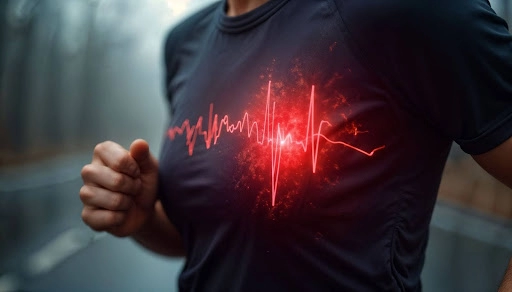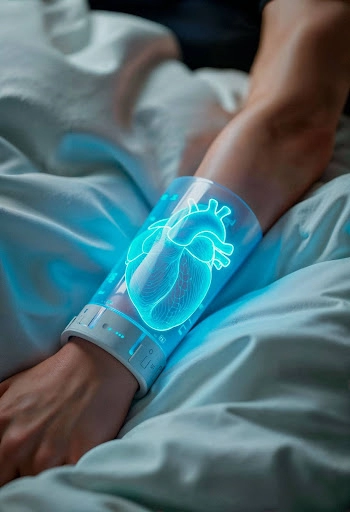Smart Heartbeats: Can AI Save Lives?

In the US, every 33 seconds, someone succumbs to cardiovascular disease. Sedentary lifestyles, unhealthy diets, and rising stress levels contribute to cardiovascular diseases (CVD), a leading cause of death worldwide. It places greater pressure on cardiologists struggling with time constraints, complex cases, and patient volumes.
Can AI change this? It is a timely question that needs to be answered. Let us begin by understanding what AI is.
How artificial intelligence is a game-changer
Artificial intelligence includes machine learning and deep learning. Machine learning (ML) identifies patterns and makes predictions from large datasets.
Deep learning (DL) is an advanced form of ML. It works using layered networks of artificial neurons, similar to the human brain.
Biological neurons receive, process, and transfer information to other neurons with which they are connected. Artificial neurons also perform a similar function; they receive data, process it mathematically, and transfer it to the next layer. It is similar to how the human brain works: learning, reasoning, and making decisions, which is why they are referred to as neural networks. The ability to process and learn from complex data makes AI useful in cardiology, where data is abundant and difficult to manage.
From data to AI insights
Modern cardiology generates data from ECGs, CT scans, MRIs, and wearable monitors. The healthcare professionals in traditional cardiology struggle to manage the vast volumes of complex data. Overworked professionals rely on experience to interpret this data, which is intricate and time-consuming.
AI utilizes machine learning and deep learning algorithms to recognize patterns that the human eye misses, thereby bridging the gaps.
CVD management is improved using advanced AI algorithms that analyze large, complex data sets, helping doctors make faster and more accurate decisions.
The data is also used to train AI models, which interpret different types of information, such as medical images, clinical notes, audio, and video, to evaluate a patient’s condition. Such multi-modal systems help improve heart disease management.
Applications of AI in transforming heart care
Having understood how AI addresses data, we will now explore how specific AI applications transform heart care. AI plays a central role in advancing minimally invasive techniques.
Cardiology has seen recent advances such as percutaneous coronary intervention (PCI) and transcatheter aortic valve replacement (TAVR), which are possible because information and results from various diagnostic tools can be combined. AI finds patterns in large amounts of data. When integrated into the workflow, it helps to standardize patient care by improving consistency and quality.
AI recognizes large datasets and improves diagnosis, enhancing consistency and quality. When integrated with clinical workflow, it enables faster decision-making and reduces variation between providers, supporting the development of new techniques in cardiovascular treatment. AI has found several applications in cardiology, which include
- ECG interpretation
- Cardiac imaging
- Interventional cardiology
- Predictive analytics
- Patient monitoring
AI is revolutionizing how heart patients are monitored in real time, whether in hospitals or at home. One key area where this is happening is ECG interpretation.
ECG interpretation
ECG is a basic diagnostic tool in cardiology, and its interpretation remains a challenge even to experienced clinicians. With training on massive datasets, AI enhances the use of deep learning algorithms in automating ECG analysis and detecting cardiac arrhythmias.
In smartwatches, it can detect atrial fibrillation with 84% specificity and 93% sensitivity, offering early warnings. AI has even enhanced the predictive values of long-term heart rhythm monitors, which have increased from 53.9% to 74% (these numbers are study and device-dependent).
Reinforcement learning (machines learn through trial and error) is being used to control robotic catheters during cardiac procedures such as catheter ablation.
Beyond monitoring, AI is also transforming what conditions are treated through invasive image-guided procedures.
Interventional cardiology

Virtual reality (VR) and augmented reality (AR) are transforming interventional cardiology by enabling minimally invasive methods to treat heart problems. They help doctors plan better transcatheter valve procedures, which reduces the procedure time.
Intravascular ultrasound (IVUS) and optical coherence tomography (OCT) provide clear views of the inside of the arteries, show plaque buildup, and identify areas at risk of causing a heart attack. Fractional flow reserve (FFR) measurements, which assess blood flow, also help determine which blockages need treatment.
AI can be integrated into traditional angiograms to detect blockages and guide stent placements.
Cardiac imaging
Among all medical fields, cardiac imaging has the greatest impact of AI. Imaging techniques were previously reliant on manual interpretation but are now fast, accurate, and less invasive. Thanks to artificial intelligence. They create large, complex visual data that AI can analyze and interpret. Deep learning models, such as convolutional neural networks (CNNs), are used in imaging modalities, including
- Echocardiography
- CT scan
- Cardiac magnetic resonance imaging
Echocardiography
In echocardiography, AI-powered tools enhance the images captured by beginners into high-quality images. It diagnoses valvular heart disease, measures heart chamber sizes, and detects cardiomyopathy and amyloidosis using the tools.
CT scan
CT scans involve radiation exposure and capture blurry images due to movement. Using AI reduces radiation doses, fixes motion-related image blurring, and speeds up calcium scoring. AI detects clot buildup and narrowed arteries, predicting heart attacks or strokes. AI-powered FFR-CT (fractional flow reserve from CT) is a noninvasive method that assesses arterial blockages. It helps to analyze pericoronary fat, which indicates heart inflammation and risk of plaque rupture.
Cardiac magnetic resonance Imaging (CMRI)
It speeds up scans, reduces motion artifacts, and creates contrast-like images without actual contrast injection.
The future: multimodal AI and cardiology
Artificial intelligence detects subtle changes and helps to improve and predict diagnoses. It provides a clear picture of heart structure and function, thereby eliminating the need for invasive tests.
It accelerates AI workflows by combining data from multiple sources, thereby creating a comprehensive picture of heart health that is not limited to just one modality.
Multimodal AI: The new frontier
The data obtained from images, texts, videos, and sounds is turned into one cohesive system called multimodal AI. Each type of data is a modality, adding layers of information to improve and make smart decisions.
Multimodal AI finds its use in healthcare, as medical data is high-stakes and complicated, and bringing together multiple data sources is difficult and expensive.
ECG and echocardiogram together are promising multimodal AI tools that help to detect the cause of heart thickening. Another tool, echocardiography and cardiac MRI, predicts patient response to heart rhythm therapy.
Challenges and Future in Cardiology
AI has potential, but it also has ethical issues such as patient privacy, the need for diverse training data, and the black box problem (where it's hard to understand how the AI decided). In the human brain, neurons facilitate connections, whereas in artificial intelligence, algorithms serve this purpose.
Most AI tools in cardiology use a single type of data, such as ECG or MRI, which requires separate programs, multiple licenses, and hardware, making integration into clinical practice difficult. Healthcare lacks integrated systems that consolidate various inputs into a unified interface, which is a requirement for multimodal AI.
Multimodal AI is indeed the future of cardiovascular care, for which we need to simplify software, integrate it into existing systems, and work closely with clinicians to make tools user-friendly.
Digital twins are a virtual model of a patient's heart. It simulates disease progression and predicts how a patient responds to treatment. AutoML is an automated machine learning tool that promotes AI use in smaller clinics. Explainable AI (XAI) demonstrates how decisions are made, thereby increasing transparency and trust, which are crucial for the future of multi-modal AI in cardiology.
Conclusion
Cardiology has benefited from AI, but with multimodal AI, it will be a giant leap. By combining data, images, clinical notes, audio, and more, it will boost performance and provide smooth integration into the clinical workflow. The research base and data-rich environment position cardiology to lead the shift. The future of cardiovascular care is not about replacing doctors; it is about doctors having the best tools. It is about providing them with smart tools, deep insights, and data integration. AI won’t save lives on its own, but it will help those who do.
Inspired by
Use of Artificial Intelligence Including Multimodal Systems to Improve the Management of Cardiovascular Disease
Biyanka Jaltotage, Juan Lu, Girish Dwivedi

